
Please, support PV!
It allows to keep PV going, with more focus towards AI, but keeping be one of the few truly independent places.
It allows to keep PV going, with more focus towards AI, but keeping be one of the few truly independent places.
GH2 Hack Technical Tests
-
Lately there has been much debate about whether the hack actually improves image quality. Following are the results of a controlled technical test. Measuring image quality with AVCHD files can be a daunting task, The codec operates in subtle and unintuitive ways. Because most processing is done in the frequency, rather than RGB domain, improvements will not often not make sense with ordinary pixel peeping (because that is in the RGB domain).
To accurately measure quality improvements you have to see how footage reacts to the processing that takes place when it is converted to the RGB domain - in other words, when it is rendered. For these tests I used this chart: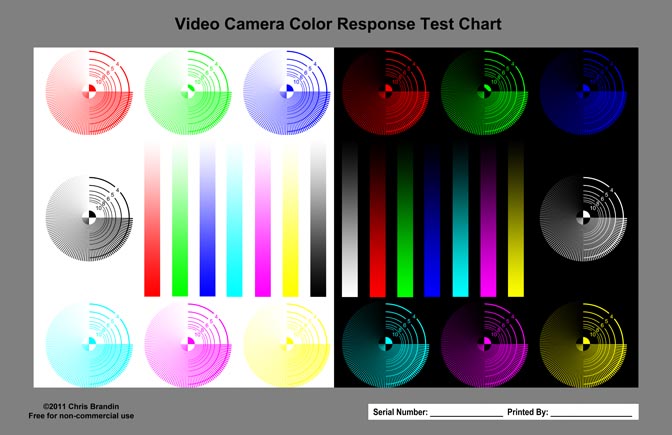
In order to make the effect of the raised quality reatures most visible I set AQ to 4 (all to detail) for these tests. Frame grabs were exported in a lossless format to Photoshop. In Photoshop, I used levels to examine image portions in a restricted range in the shadows. Photoshop interpolates values within this range to produce the final image. The quality of that interpolation is very dependent on the quality of the image. It's very similar to how any kind of editor will work. As a reference I also took a still image of the chart using the highest quality the GH2 can prduce and processed the raw file. Following are histograms taken from these processed images. The lines in the histograms show quantization artifacts - you can actually see how fine (or coarse) the quantization is. This relates directly to image quality, and how far you can go with post processing and still have a good image.
Still Image: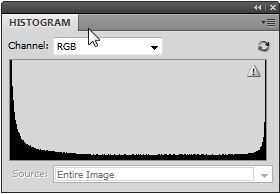
Factory Firmware at 24H: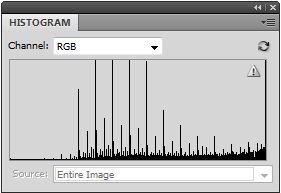
24H set at 44M with AQ=4: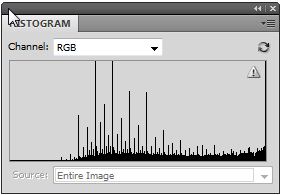
24H set at 66M with AQ=4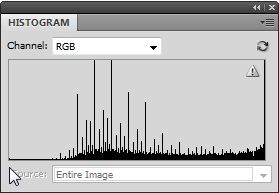
As you can see there is a significant improvement at 44M and an additional, but not as big an improvement at 66M (mostly in the deep shadows).
Chris -
I was impressed with the article you wrote.. thanks you see my website : http://sultanbola.net/
-
I'd rather focus on other things now - like loop filter adjustments and film modes, for example. http://surga198.com and https://dewauno.com/2019/05/06/agen-casino-judi-slot-online-biaya-termurah-di-casino198/
-
@v10tdi
Thank you, these Panasonic utility apps look like exactly what was asked for!
I can't try them out right now as I'm on the road without my GH2. Will test when returned on MOnday.
(later)
I tried out the AVCCamRestorer.app with some random .MTS files I had on my laptop. It created the entire PRIVATE directory structure and supporting info files. Looks good. This utility might provide some clues as to what is happening to the directory when the spanning goes awry.
-
Does the Panasonic AVCCAM Viewer, Restorer or SD Card File Recover tool help with non-spanning files?
https://eww.pass.panasonic.co.jp/pro-av/support/desk/e/avc_download.htm
-
@cbrandin I agree that http://www.personal-view.com/talks/discussion/comment/12993#Comment_12993 describes the spanning issue precisely. I have it with a patriot LX series class 10 card. Not the best card, but decent i think. I can get spanning at 32M for both SH and 24H with 3.61 (SH sometimes errors out after spanning and creating a small 2nd file (12-70 MB) usually with a really complex scene like leaves blowing in wind - but i think this is another problem - maybe my card - if i drop the bitrate to 28M SH always spans fine). With 3.62 I could not get 24H or SH to span at 32M no matter what, if i was shooting my tree of death. 3.62 24H spanned fine at 32M if i shot a scene with much less motion that averaged ~22M when looked at in quicktime.
@bdegazio I once successfully repaired an AVCHD directory from a canon camcorder so that Final Cut Express could read it. The owner had deleted some of the previous .MTS files using a card reader (because he was using vegas and using the MTS files directly) and so stuff i shot on it would not be recognized and imported in the Final Cut. I looked in another directory in the structure that had tiny files with numerical names corresponding to the .MTS files to find out which files were missing. I then tricked final cut by putting empty text files in place of the numbered .MTS files (named ie 000003.MTS) that were missing so when it looked for that MTS file, it found it, despite that fact that it was an empty file. This worked in fine FCE as long as I did not try to import any of the clips that were now empty files :) -
@sohus, @cbrandin
Regarding the "corrupted" card issue with failed spanning, I also noticed that the non-spanned file would not play in-camera. I tried to "repair" the card directory by deleting the offending file in-camera, but the GH2 responded with "File cannot be deleted." The only way out of this dead-end was to re-format the card.
I did a brief search online to see if there were any utilities that would repair/rebuild a corrupted BDMV directory, but didn't find anything useful. -
@cbrandin
As mentioned: when you don't hit the 4GB limit with any clip in any bitrate (i.e. 66mbit), the SD card is detected by Final Cut Pro X and you can preview clips. They also playback fine in camera and you can switch between clips. Once 1 clip on the card hits the 4GB mark and does not span correctly, the entire card gets 'corrupted' i.e. it is not playable in camera or in AVCHD devices, only on a computer with certain programs. I guess this has to do with a file structure on the card that gets corrupted because of the failed spanning. -
>I'd rather focus on other things now - like loop filter adjustments and film modes, for example.
woohoo -
RE: file spanning problem. I think there could be an issue with Transcend class 10 16GB SDHC cards.
Quoting from an email sent to a UK customer;
'Transcend 16GB SDHC Class 10 Memory Card
Transcend recalls the above product due to possible failure on data transfer with over 4GB usage.
Due to manufacture process issue, item subjected to this recall might cause read/write blocking if in use capacity is over 4GB.
Please follow these steps in order to determine whether your memory card is subject to this recall:
Printed at the back of the SDHC Card is a 10-digit serial number, look at the first 6-digits to determine if your product is subject to this recall:
http://www.transcend-uk.com/Support/ShowSNImg.asp?PartNo=ts16gsdhc10
Serial Numbers subject to recall are: 446136 XXXX and 446121 XXXX
(XXXX represents numbers from 0001 to 9999) -
-
@cbrandin
Yes, I think that's a pretty good summary of the spanning problem.
A further clue perhaps is that, on a card where a spanning error has occured, Final Cut Pro X fails to recognize the card as a valid camera card. I'm guessing that there is some auxiliary data that doesn't get written to the containing directory when the spanning fails. Might also relate to the skipped file number. -
Let me make sure I understand the spanning issue correctly. When the 4G file limit for a single take has been reached another file is produced. If spanning fails, that second file is never produced. The next take names the file as if the spanning had worked, going from 0001.mts to 0003.mts, for example, and it will be fine until the 4G limit for that file is reached. The problem occurs when any take reaches 4G. Shorter takes in between don't affect this pattern. This occurs fairly reliably at bitrates over 32M, irrespective of the SD card type used. Have I got it right?
Chris -
I've had the spanning problem with everything over 32mbit. Except 1 time with a low detail static scene and 44mbit it did not manifest. So basically > 32mbit = not spanning.
As mentioned by others... the clip that does not spans gets written to the memory card. As this happens, you can't play other files anymore on the card and Final Cut Pro X does not recognize it anymore. The clips play fine in VLC/Movist/ClipWrap etc. If 0000.mts spans (but fails), the next clip will be 0002.mts. So something goes wrong there. I guess it is related to a buffer or memory or something that overflows. -
-
Here are the links to the medium sized resolution charts cbrandin is using.
http://tinyurl.com/3apq5ff -
It would be nice to have some Dynamic Range test of the gh2 and hacked one. This is the only lacking test compared to other camera also. The gh2 is the poor man child, it is the hidden gem, as if no one is interested in showing it in the mainstream (I say website, blogs, forum etc) video/hdslr media.
-
PS - Patriot 16G class10, DANE-ELEC 32G Proline 200x. The latter is definitely the superior card. But even it failed the spanning test with ptool 3.62, 24H 44mbps and 66 mbps. However 24L at 32 mbps spanned OK on the same test shot.
These results surprised me as kae (I think) on another thread had previously been spanning 66 mbs under ptool 3.61.
-
@cbrandin - "Were your tests on freshly formatted cards? Which cards?"
Yes, card always formatted immediately before a shoot. -
Good to know. Were your tests on freshly formatted cards? Which cards?
I guess the main question now is whether anybody doesn't have this problem. If not, why not? What is different?
Chris -
I've had the spanning problem on 3.62 with anything over about 32mbs. Also in 3.61 on 50 mbps shooting.
-
Has anybody not had the spanning problem? How much has this been tested? Have different people with different cards tested this? I just want to be sure it isn't a problem with one persons card or camera, etc...
Chris -
I should point out that charts can never manifest subtleties like real world subjects. I used a chart because I wanted to be totally in control of everything. I suspect the difference in the histograms with real world subjects may be even more striking. Gradients, for example, are extremely hard to do with charts because in that regard cameras tend to outperform printers. Testing with real world subjects, containing both detail and gradients would also be useful - harder to control, though.
Chris -
Files only span under 32mbit (approx.) in 3.62. I think the sweet spot is somewhere between 44mbit and 66mbit from what I have seen so far. We need to do more testing with this!
-
@DrDave
Sounds like a good idea. I wonder how many people will actually produce the same shot using two different settings, though. It's not so easy, lighting, etc... can change from minute to minute.
I like the idea of processed footage - some of the biggest advantages of hacking only show up in an environment that includes post processing. What might not be visible in unprocessed footage might become very visible in processed footage. Relatively invisible latitude, for example, could become very visible when you make use of it.
Chris -
Thanks Chris, this is really fascinating. If I can hazard to draw a comparison from audio, which I know better than video, there is a lot of gear which tests better but does not necessarily sound better. Of course that is subjective, and what you are doing is to do a controlled test, but I would still like to see some real world footage. And here, I think--again, trying to be systematic--ideally the footage would take the form of an internet poll, where it is unlabelled, you vote, then see the result. If I understand what you are saying, part of the value lies in how far you can "push" the video in post, and it might be nice to see some examples of that. Thanks again for all your work.
Also it seems like 44m may be a kind of sweet spot--looking at the animated chart it seems like a few of the artifacts (e.g., the line on the far left) increase in places, if I'm reading it right. The sweet spot is interesting for me because I would like to identify a setting that increases quality but also file-spans reliably. Or just gives the best file space to IQ ratio. Based on your tests I will probably go for that setting, and live with the camera for a while--thanks for giving me a good starting place.
Start New Topic


Howdy, Stranger!
It looks like you're new here. If you want to get involved, click one of these buttons!
Categories
- Topics List23,990
- Blog5,725
- General and News1,353
- Hacks and Patches1,153
- ↳ Top Settings33
- ↳ Beginners256
- ↳ Archives402
- ↳ Hacks News and Development56
- Cameras2,367
- ↳ Panasonic995
- ↳ Canon118
- ↳ Sony156
- ↳ Nikon96
- ↳ Pentax and Samsung70
- ↳ Olympus and Fujifilm101
- ↳ Compacts and Camcorders300
- ↳ Smartphones for video97
- ↳ Pro Video Cameras191
- ↳ BlackMagic and other raw cameras116
- Skill1,960
- ↳ Business and distribution66
- ↳ Preparation, scripts and legal38
- ↳ Art149
- ↳ Import, Convert, Exporting291
- ↳ Editors191
- ↳ Effects and stunts115
- ↳ Color grading197
- ↳ Sound and Music280
- ↳ Lighting96
- ↳ Software and storage tips266
- Gear5,420
- ↳ Filters, Adapters, Matte boxes344
- ↳ Lenses1,582
- ↳ Follow focus and gears93
- ↳ Sound499
- ↳ Lighting gear314
- ↳ Camera movement230
- ↳ Gimbals and copters302
- ↳ Rigs and related stuff273
- ↳ Power solutions83
- ↳ Monitors and viewfinders340
- ↳ Tripods and fluid heads139
- ↳ Storage286
- ↳ Computers and studio gear560
- ↳ VR and 3D248
- Showcase1,859
- Marketplace2,834
- Offtopic1,319







